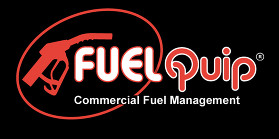What Is A Fleet Telematic Unit?
If you are the proud owner of a large and growing commercial fleet, then you have to have a solid way of tracking this asset, its maintenance, its value, and the returns that it’s providing. Fleet telematics are the currently the preferred way for companies to accomplish all of these things. Like many business owners, you may be asking the question, “What is a fleet telematic unit?”. If so, then the following information will definitely prove helpful.
At its most basic, this unit is a special, tracking device that can be hooked into your vehicle and then connected to a larger, computer system for collecting, tracking and analyzing data. This way, you won’t have to do things like manually track mileage or ask your drivers via cell phone or radio communications exactly where they area. Once this system is in use, there are many things that you will be able to know about your vehicles at all times and in real time.
Fleet management systems that are data-enabled are not just beneficial to the companies that own and use them. They can also be incredibly helpful to the individuals that work for these businesses. Rather than spending the majority of their time idling or backtracking through congested areas due to poor routing and poor resource management, these professionals can spend of their working hours providing the services that they have been specifically trained to provide.
Among some of the other benefits that can be gained by fitting your truck or trucks with a quality, fleet telematic unit is increased overall safety. When drivers know that they are constantly being monitored by their employers, they have a much higher likelihood to perform according to the regulatory standards of their industries and the businesses they work for. This invariably results in fewer damages to company freights and other company assets.
Real-time communication can help drivers avoid road delays, especially when paired with high-end routing apps. It also becomes much easier to make high-priority loads a top focus. Simply adding several additional minutes of drive time to a trucker’s regular service hours can have a very dramatic impact on the overall utilization of fleets.
These benefits can additionally result in increased employee satisfaction and morale. Drivers can obtain greater control over their day to day routines through the use of electronic logging practices. They can easily determine the amount of time that they have available to them for specific tasks. When these systems are connected via mobile phones or tablets, drivers can get instant updates concerning rerouting needs, detours and even pathways that will lead them to the best fuel companies.
Installing one of these units is also a great way to limit overall operating costs. This is done by reducing idling time and ensuring that drivers are always taking the most efficient routes possible. Not only will this save on fuel costs, but it can additionally limit the amount of wear and tear that company vehicles sustain.
Both managers and drivers can look forward to easier tracking of service and hours as well. This is a feature that is available at all locations and at all times. As a result of this availability, companies can spend far less time on manually documenting key tasks and the related time that is being spent on them. Telematics technologies are currently being viewed as the future of commercial fleet management.


